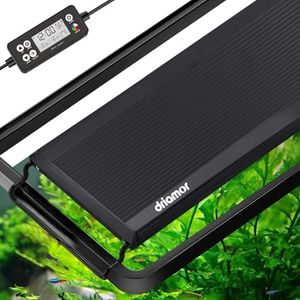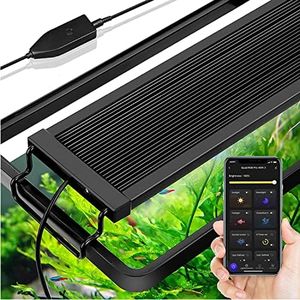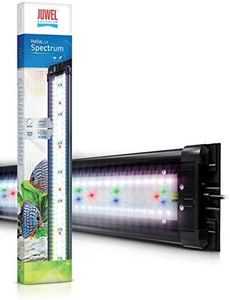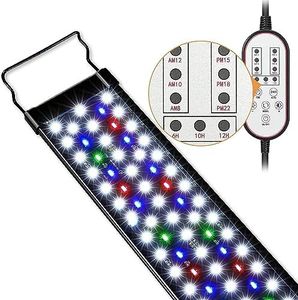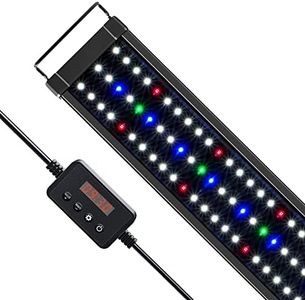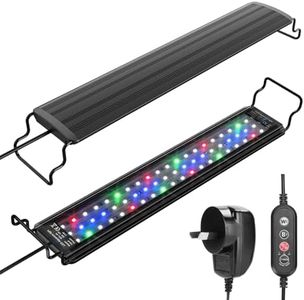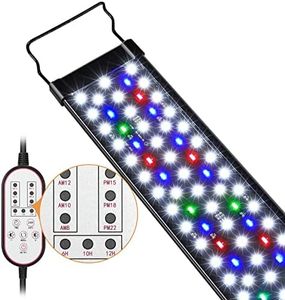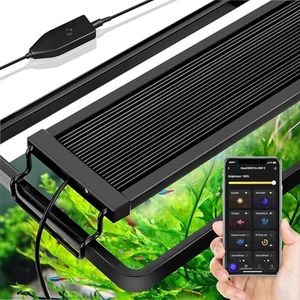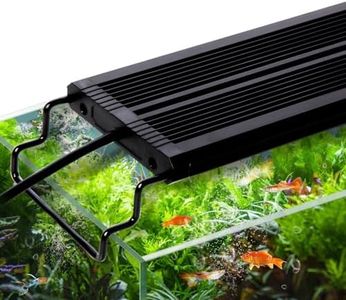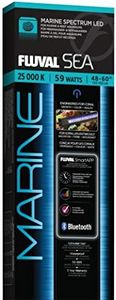We Use CookiesWe use cookies to enhance the security, performance,
functionality and for analytical and promotional activities. By continuing to browse this site you
are agreeing to our privacy policy
10 Best Aquarium Lights
From leading brands and best sellers available on the web.Buying Guide for the Best Aquarium Lights
Selecting the right aquarium light is essential for both the health of your aquatic life and the beauty of your aquarium. The right lighting supports plant growth, brings out the best colors in your fish and decor, and helps simulate a natural environment. Consider what type of tank you have (freshwater, saltwater, planted, or fish-only), as well as the needs of the living organisms inside, when choosing your lighting.Light Intensity (Lumens or PAR)Light intensity, often measured in lumens or PAR (Photosynthetically Active Radiation), describes how much usable light is provided to the aquarium. For a tank with only fish, a lower intensity is fine since you're mainly illuminating for viewing pleasure. However, live plants or corals need more intense light to grow properly. Lower light (fewer lumens or lower PAR) is suitable for easy, low-maintenance plants, while higher intensity is needed for demanding plants or corals. Matching intensity to your aquarium setup and inhabitants is the key to healthy growth and vivid colors.
Light Spectrum (Color Temperature)Light spectrum, commonly stated as color temperature in Kelvins (K), refers to the color of the light produced. A spectrum around 6500K closely mimics natural daylight and is ideal for most planted freshwater tanks, as it supports plant photosynthesis and provides a natural look. Marine tanks with corals might benefit from actinic (bluer) lighting (10,000K and above), which penetrates water better and enhances coral colors. Picking the right spectrum helps your aquatic plants or corals thrive and makes your tank visually appealing.
Light Type (LED, Fluorescent, etc.)There are several types of aquarium lights, with LED and fluorescent being most common. LED lights are the most popular today because they are energy-efficient, long-lasting, and often come with adjustable features. Fluorescent lights are less efficient but still serviceable, and they're sometimes chosen for specific aquatic needs. Choose LEDs if you want easy maintenance, customization, and less heat, but other types may suit traditional setups or special requirements.
Adjustability and Control (Dimming, Timers, Modes)Adjustability features include dimming, automatic timers, and different lighting modes (like sunrise/sunset simulation or moonlight). These features let you mimic natural lighting cycles and make caring for your tank easier. Timers help ensure consistency for plant growth or fish behavior, and dimming can prevent shocking your inhabitants with sudden bright light. If you want convenience and more control over your tank's environment, look for lights with these adjustable features.
Coverage and SizeIt's important the light fixture you pick properly covers your aquarium's length and width, ensuring even lighting without dark spots. Most fixtures are sold in lengths to match standard tank sizes, and some are extendable. Always check dimensions and select a fixture that matches or slightly exceeds your tank's length. This ensures all areas, especially for plants or corals, receive sufficient light.
Water Resistance and SafetyAquarium lights can be exposed to splashes and moisture, so water resistance is an important safety feature. Look for lighting fixtures rated for use above aquariums or those with water-resistant or waterproof certification. This protects the light from damage and reduces risk of electrical issues, keeping your setup safe for you and your aquatic pets.
